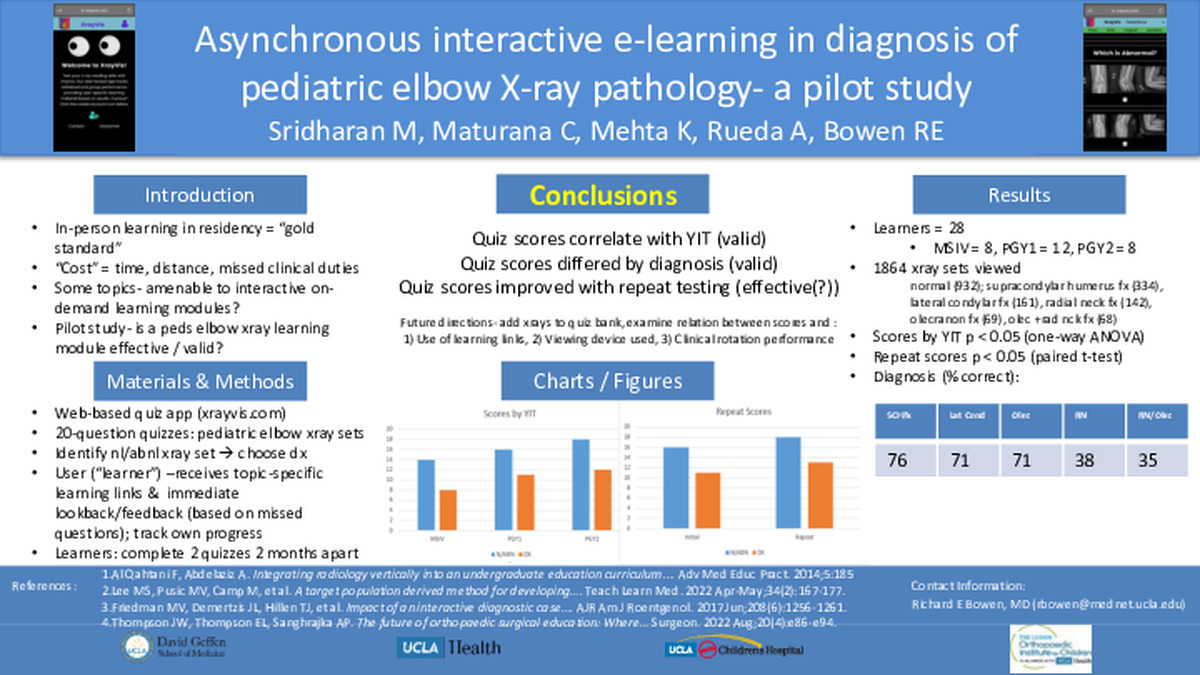
-
Author
Carlos Maturana -
Poster Title
Interactive e-learning in pediatric elbow X-ray pathology - a pilot study
-
Author(s)
Mathangi Sridharan, MD; Carlos Maturana, MD, MS; Alexander Rueda, BS; Karenna R. Mehta; Richard R. Bowen, MD
-
Contact Author Email
cmaturana@mednet.ucla.edu
-
Poster Abstract
Intro:
This pilot study examines a web-based interactive e-learning application designed to evaluate and improve diagnostic accuracy of pediatric elbow x-rays in medical learners.
Methods:
We grouped medical student orthopaedic sub-interns (MS4) and junior orthopaedic residents (PGY1/PGY2) into “early” (MSIV) or “intermediate” (PGY1/PGY2) learners. A web-based interactive application (XrayVis.com) tested ability to correctly diagnose pediatric elbow x-rays. Learners see two x-ray sets (one abnormal) and select 1) the abnormal set (N/ABN) and 2) diagnosis for the abnormal set (Dx). The application provides user-specific online learning links based on missed questions. Statistical analyses: two-sample t-test for quiz scores (% correct) by learner experience; Chi-squared test for goodness of fit assessed scores for each diagnosis; two-sample t-test determined if scores varied between “straightforward” and “challenging” diagnoses.
Results:
37 learners (MS4: 15, PGY1/PGY2: 22) viewed 1118 x-ray sets. Most common pathologic diagnoses were: fractures of the supracondylar humerus (396), lateral condyle (194), radial neck (88), olecranon (88), combined olecranon/radial neck (75), occult (40), medial epicondyle (18), medial condyle (15); and radial head dislocation (n=24). Scores varied by learner experience (early: 62; intermediate: 71 ; p=0.073 (NS) for A/ABN : 42 vs 57; p=0.029 for Dx). Correct diagnosis significantly affected quiz scores (Chi-square statistic 64.9, p=5.05E-11). “Straightforward” (olecranon, supracondylar humerus, lateral condyle, and medial epicondyle fractures) vs “challenging” (all others) diagnoses differed significantly (76 vs 39, p=7.4E-5).
Conclusion:
A web-based interactive application stratified learners by experience and highlighted commonly missed diagnoses. This application could focus educational efforts towards more challenging diagnoses. Future plans are to examine any relationship between online learning links and scores over time
-
Keywords
medical education, teaching methods, assessment
-
Poster PDF

